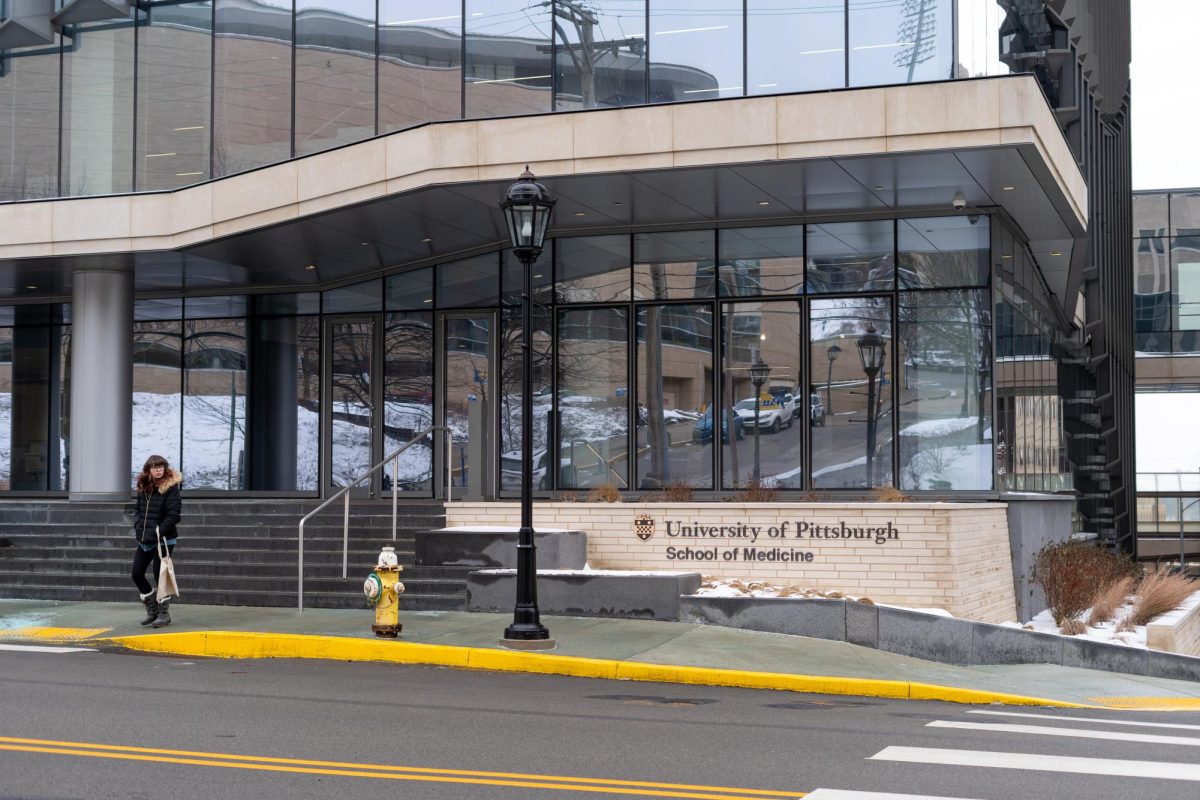Pitt research funding could be drastically slashed if lawsuits against the National Institutes of Health’s recent orders fail, according to Pitt administration.
The NIH limited grant funding for indirect costs to 15% of research funding for current and future grants in a guidance issued on Feb. 7. While the order is currently on hold after the Association of American Universities, AAMC and 22 state attorneys general recently filed lawsuits, Pitt administration and researchers said they’re worried about the future of research on campus.
The NIH order targets indirect costs, which is funding that covers building and equipment maintenance, support staff salaries and other overhead costs to operate research labs. Indirect cost rates total over 50% for Pitt research currently. According to Pitt administration and researchers, without enough indirect funding to cover these costs, research is slowed down because there is not enough support for the scientists and their labs. Secretarial and administrative jobs may be lost, and by extension, labs may be unable to run.
Several lawsuits were filed immediately following the announcement of the funding cut, one of which is a joint suit involving the AAU, which Pitt is a part of. The hearing for the lawsuits, which is scheduled for Feb. 21, will determine if the policy can be implemented.
The NIH spent more than $35 billion in the 2023 fiscal year, and $9 billion from the budget was spent for indirect costs. The NIH reported their indirect costs typically averaged between 27-28%. Pitt receives nearly $700 million in funding for research from the NIH, ranking sixth among universities nationwide and sixth in medical schools in America to receive NIH funding.
Chancellor Joan Gabel released a statement on Feb. 11 highlighting the impact this cut would have on Pitt.
“A significant reduction of these funds will result in irreparable harm for University operations: for our patients who receive treatments and cures, the students who become their best selves on our campuses, and the people whose livelihoods depend on our innovation economy,” Gabel said.
A collective statement from four University leaders released on Feb. 9 informed students of the impact that the cut would make and the actions Pitt is taking to address the situation.
“We’ve undertaken an immediate impact analysis of the overall financial consequences for Pitt in real time along with estimated forward-looking projections,” the statement read. “In addition, we’re engaging closely with universities across the country, and with our national representative associations, as they consider the appropriate responses.”
The statement conveyed uncertainty about the potential impact of the funding cut felt by Pitt research and administration.
“Ultimately, the full impact of this change in the short and long term remains to be seen, but there is no doubt that our collective scholarly impact could be harmed irreparably, as could our broader mission,” the statement said.
Martha Miskanic, a lab technician in a neurobiology lab studying alcohol use disorder, clarified the essential role indirect funding plays in research.
“There’s background things like the electricity and building rent, administrative salaries like HR and the people we work with that aren’t in the lab and animal research housing, that are all part of indirect funding for many labs,” Miskanic said.
Miskanic highlighted the impact the funding cuts would have on researchers themselves.
“If you get to the point where you don’t have the money to keep things going in the lab, then [the research] just might not happen,” Miskanic said. “That is really harmful for a lot of people, especially the grad students who need this research to get their PhDs, the [primary investigators] who need to keep the research going and everyone who could be impacted by the research we’re producing.”
Emily Knapp, a senior neuroscience major who studies Alzheimer’s disease in her lab, found that her position, which she has held for about a year, as an undergraduate researcher may not be guaranteed for the following year due to the funding cut.
“It’s really dependent on if they have the money to keep me,” Knapp said. “If I don’t keep the job, it’s gonna be hard to find a lab anywhere because you’re likely going to have mass amounts of people trying to find new labs.”
According to Knapp and Miskanic, no one quite understands what the funding cut means for them. They said scientists in labs are feeling uncertainty as the lawsuit hearing date approaches.
“It’s a very scary time in research,” Knapp said. “So far, I think we’ve been told business as usual, but people’s livelihoods are on the line at bare minimum. So to not know what’s happening or if this goes through, then what it means, is very unnerving.”
Knapp also emphasized the impact that the funding cut has on research locally and internationally. On a local scale, research is a large part of Pittsburgh’s economy. On a global scale, research progress is stunted due to decreased support from indirect funding.
“We collaborate with people across the world to build off of ideas and work together,” Knapp said. “Affecting the progress of research means you’re changing the course of medical research and advancements for the whole world.”


